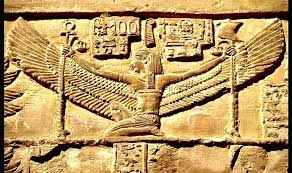What they knew about life, and fate

An advanced understanding of the cosmos and the movement of the planets was embedded in Ancient Egyptian rituals and beliefs. Very significant to them was the concept of Ma’at, representing order, justice, truth, and balance. They believed this was essential for maintaining harmony, not just in their society but in the entire universe.

Isfet was the opposite of Ma’at, representing chaos, injustice and violence.
The Ancient Egyptians believed in fate but felt that respecting the hidden powers of the cosmos, following your intended path, and living by the tenets of Ma’at, would influence your destiny and afterlife.
All three novels reflect these beliefs of the Ancient Egyptians. A Long Walk With Fate is rooted in the warring concepts of Ma’at and Isfet, and how forgiveness is critical to moving forward.
A feast for the senses

A few years ago, my husband and I and two friends were lucky enough to travel through Morocco with the help of a wonderful guide, Brahim Karaoui. We started in Marrakech, drove southeast across the desert to the amazing city of Ouarzazate (Morocco’s ‘Hollywood’) and on to Merzouga, where, after a long camel ride, we spent a night under the stars. From there, we drove north to Fez, a city I fell in love with. It is an absolute feast for the senses – a multitude of colours, the scents of sandalwood, citrus and jasmine, the ubiquitous mint tea, and the happy chaos of the street markets.

The scenery of the Sahara and the Atlas Mountains appears in In Love With The Night and A Long Walk With Fate, and the Riad Capella was inspired by our stunning hotel in the beautiful walled medina of Fez.

How they deal with the fateful events that shape their lives

Over my three novels, three completely different women come onto the stage.
Rachel Covelli, in The Way Things Fall is a quiet, thoughtful person in her early twenties, happy with her own company and not part of the social, party-going scene usually expected of someone her age. Before she develops her career, she falls under the influence — some might say the spell — of Karl Gustav, an astronomer-Egyptologist who taps into a deeper part of her psyche. She feels he is the only man who has ever truly known her. Later, as a successful art critic, she develops greater self-awareness and self-confidence but her attraction to Karl proves to be deep-rooted and inescapable.
Amina Gamel, in In Love With The Night is only fifteen when we first meet her. She is poor, with no hope or ambition for the future. When taken in by a wealthy hotel owners, she lives a life of gratitude, very much in the shadows, and nurses a crush on one of two brothers in the family. It takes a long time for Amina to realize the power of her physical beauty and beguiling personality.
Gabriella Mazhar, in A Long Walk With Fate is in her early thirties. She is a bitter woman, believing her family does not value her contribution to the business. Eventually, this bitterness hardens into a calculated need for a husband and child and a plan to take over the entire enterprise. As the story evolves, Gabi loses her moral compass and her grip on reality.

